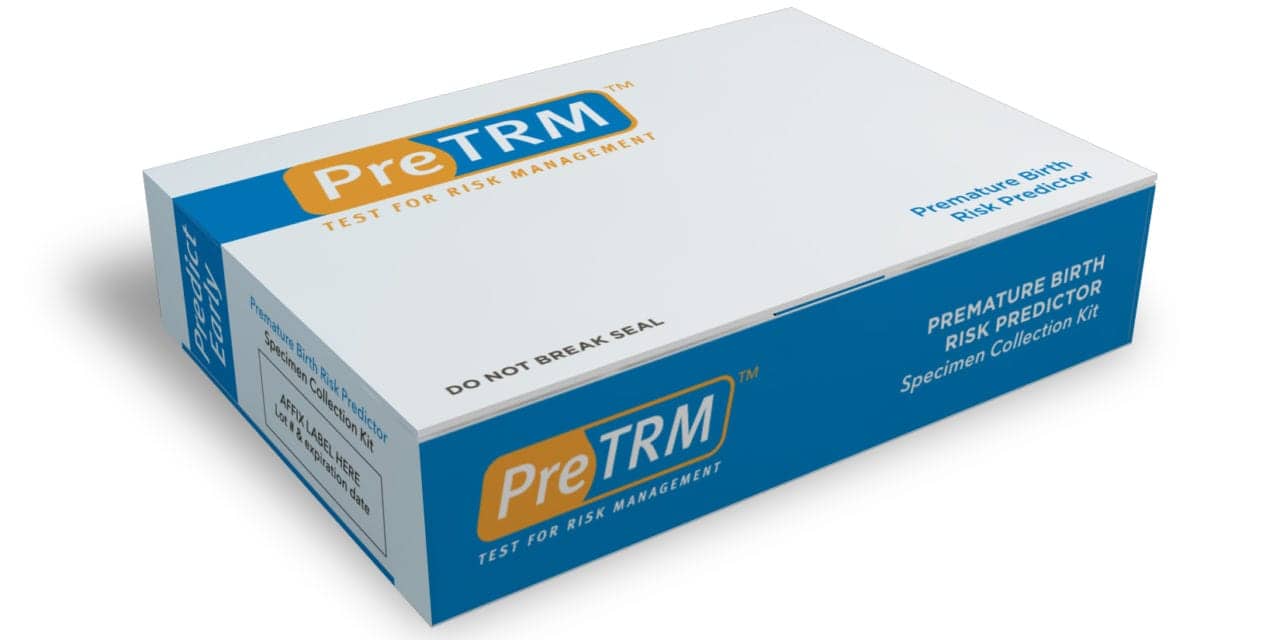Intermountain Healthcare, Salt Lake City, has launched the first study of its kind to identify women at risk for premature birth, defined as birth occurring before 37 weeks of gestation, and to evaluate the effect of early interventions designed to prolong pregnancy and reduce the rate of premature delivery among those identified as high risk.
The Prevent PTB study will enroll up to 10,000 study participants, who will be randomly assigned to either an experimental group or a control group. Participants in the experimental group will provide a blood sample for the validated PreTrm test from Sera Prognostics, Salt Lake City, and those found to be at high risk of preterm birth will receive the study’s early, preemptive treatments intended to reduce the number of preterm births and newborn deaths as well as shorten hospital stays for premature babies. Participants in the control group will undergo normal medical screening to determine their risk of preterm birth. Women who have a history of preterm birth, are under age 18, or are more than 21 weeks pregnant, are not eligible to participate in the study.
Five Intermountain hospitals will recruit pregnant women for the Prevent PTB study: Dixie Regional Medical Center, Intermountain Medical Center, LDS Hospital, McKay-Dee Hospital, and Utah Valley Medical Center. Sera Prognostics is the source of funding for the study.
Previous research involving more than 5,500 participants found that the PreTrm test accurately identifies pregnant women at high risk of preterm birth, even if they have no previous history or other signs of the condition, such as a shortened cervix.
“This is the first time we’re able to use a blood test to identify the women at highest risk and start to intervene to prevent the preterm birth,” says D. Ware Branch, MD, medical director of Intermountain Healthcare’s women and newborns clinical program and principal investigator of the study.
“We are pleased to see Intermountain leading clinical research with this important study. The Prevent PTB study is designed to show the benefits of early identification and proactive intervention in reducing preterm birth rates and improving the health of babies,” says Gregory C. Critchfield, MD, chair and CEO of Sera Prognostics. “By identifying more pregnancies where earlier, more proactive intervention is beneficial, society, families and, most importantly newborn infants, have the potential for better outcomes and lower healthcare costs.”
According to the March of Dimes, preterm birth affects 15 million infants worldwide each year and causes 1 million deaths. Of almost 4 million babies delivered annually in the United States, approximately 11% are preterm; the rate for premature birth in Utah is slightly below the national average. In addition to being the leading cause of newborn death, preterm birth can produce long-term complications for infants who survive, including cerebral palsy, chronic respiratory illness, developmental delays, learning disabilities, seizures, and vision and hearing loss. Lifelong care for individuals with these conditions can be expensive.
“The biggest challenge we have in trying to treat preterm birth is we don’t know who’s going to have it,” says Sean Esplin, MD, maternal-fetal specialist at Intermountain Medical Center, director of research for women and newborn services at Intermountain Healthcare, and scientific founder of Sera Prognostics. “Out of every 100 pregnant women who come to my office, I know 10 of them will deliver early. But I don’t know which 10 to focus on, except for a few with a previous preterm birth, shortened cervix, or other risk factors. Otherwise, I have to wait until they come in with symptoms, and by then, it’s often too late to stop it.”
For this reason, Intermountain Healthcare turned to the PreTrm blood test to assess risk earlier. Previously published research shows that for blood tested as early as 19 or 20 weeks gestation, PreTrm accurately predicts the chance of preterm birth by measuring and analyzing a pattern of proteins in the blood and focusing on two proteins with high predictive performance.
“Of all the women who are pregnant, our current clinical methods identify fewer than half of those who eventually will give birth before 37 weeks,” says Branch. “We hope to show this test will identify a goodly proportion of the remaining patients to determine whether doing the test can enable interventions that prevent preterm births and/or improve neonatal outcomes among those who are born prematurely.”
For study participants with singleton pregnancies identified as high risk for preterm birth by the PreTrm test but who lack common symptoms, the Prevent PTB study will provide preemptive treatments. Medical interventions used to reduce the likelihood of preterm birth or to lengthen gestation include injected or intravaginal progesterone, which can reduce the risk of preterm birth by 30%; use of a vaginal device to support the cervix, or stitching the cervix closed until late pregnancy; visits to prematurity prevention clinics and weekly nurse contacts to check on expectant mothers’ symptoms; and baby aspirin to reduce inflammation. Treatments for babies born prematurely may include antibiotics, magnesium sulfate to reduce neurological disabilities, and umbilical cord ‘milking’ to push more oxygen-carrying red blood cells into premature babies just after delivery.
Study subjects determined not to be at high risk by the PreTrm test and those randomly assigned to the control group will receive normal obstetrical care unless they develop symptoms that require treatment for possible preterm birth at a high-risk obstetrics clinic. The study design is adaptive, with readouts expected to occur at some time between 18 and 24 months.
If the study shows the PreTrm test and early intervention can reduce preterm births, the researchers hope to launch subsequent studies investigating whether this reduction translates to fewer disabilities and lower healthcare expenses for premature babies. “Every day a woman stays pregnant after 24 weeks saves $10,000 in the cost of taking care of the baby,” says Branch. “Each year in the United States, we spend tens of billions of dollars taking care of babies who are born too early. That’s why this study is so important.”
To learn more, visit Intermountain Healthcare and Sera Prognostics.








